Seven for No. 7: The pros and cons of the players the Pacers could draft at No. 7 overall
- Oops!Something went wrong.Please try again later.
- Oops!Something went wrong.Please try again later.
- Oops!Something went wrong.Please try again later.
- Oops!Something went wrong.Please try again later.
- Oops!Something went wrong.Please try again later.
- Oops!Something went wrong.Please try again later.
- Oops!Something went wrong.Please try again later.
- Oops!Something went wrong.Please try again later.
- Oops!Something went wrong.Please try again later.
- Oops!Something went wrong.Please try again later.
- Oops!Something went wrong.Please try again later.
- Oops!Something went wrong.Please try again later.
- Oops!Something went wrong.Please try again later.
- Oops!Something went wrong.Please try again later.
- Oops!Something went wrong.Please try again later.
The top of this NBA Draft seems to have quickly organized itself into tiers.
Tier 1, by himself, is Victor Wembanyama, whose entry into the NBA is the most anticipated since LeBron James. There haven't been many players his height in history -- somewhere between 7-foot-3 and 7-5 depending on what measurement you believe -- and none of them consistently hit crossover, step-back, fadeaway 3-pointers.
The next tier includes G League Ignite guard Scoot Henderson and Alabama forward Brandon Miller. Who goes second and who goes third is still hard to say, but they will almost certainly be the players taken in those two spots.
After that, there is a tier of seven players who seem to fit in spots 4-10 and the Pacers are picking right in the middle of that tier at No. 7.
There's no chance the Spurs, who have the No. 1 pick, have any interest of moving down with Wembanyama on the board. There is at least some possibility the Pacers can talk to the Hornets at No. 2 or the Trail Blazers at No. 3 about trading for those picks, though the price will likely be high and could include players on the current roster. Otherwise, even if they trade up to No. 4, No. 5 or No. 6, they'll be selecting from players in that third tier. There are a few players that seem to more directly fit the Pacers' needs -- power forwards who can help on defense -- and none of them seem to be an impossible fit. Pacers president of basketball operations Kevin Pritchard indicated after the lottery that he'd be interested in several players in that tier.
So what follows is a look at those seven players, how they fit, how they don't, and why they may or may not be around when the Pacers pick at No. 7. The Pacers won't have their choice among all of them, but there will be at least three left on the board by the time they're up.
Amen Thompson, guard, Overtime Elite
Why he fits: Pritchard said he considers it necessary to take a player with a high ceiling at No. 7 and Thompson certainly qualifies. He's an elite-level athlete with a reported 44-inch vertical -- though he didn't test that out at the NBA Draft Combine. He measured at 6-5 3/4 barefoot at the combine, short of his 6-7 listed height, but he posted a legit 7-foot wingspan. And he has just about every skill necessary to be a lead guard in the NBA. He's an exceptional passer and ball-handler. He can get well above the rim, and he has excellent touch and body control around the basket which makes him a magnificent finisher. On defense, his length, speed and agility allow him to defend several positions and he can wreak havoc on passing lanes. He's a point guard and playmaker by trade, but his size allows him to easily move to the 2 or the 3.
He and his twin brother, Ausar, led City Reapers to a championship in Overtime Elite, the innovative Atlanta-based professional league for 16-20-year-old players. He averaged 16.4 points, 5.9 assists, 5.9 rebounds and 2.3 steals per game in the regular season, then 17.2 points, 9.2 assists and 7.2 rebounds in the playoffs. Of any of the players in this tier, he may have the most potential to be an All-Star.
Why he doesn't: Though Thompson doesn't have to be a point guard, he's at his most valuable in that spot, so taking him would create a bit of a redundancy with Tyrese Haliburton, the current face of the Pacers' franchise. Though he has the size and some of the skills to play the 2 and the 3, his biggest weakness is his outside shooting. He obviously has time to improve, but he made just 25% of his 3-point attempts this season and wasn't great at mid-range jumpers either. He shot 56.6% from the floor largely on the strength of his ability to finish at the rim. He could obviously slash for buckets and the Pacers could put him in ball screen actions as a 2 or 3, but he loses value as a wing if he can't be a reliable spot-up shooter.
Who might take him first: The Rockets seem to be in the market to move the No. 4 pick, but Thompson would be a good fit there as a backcourt compliment to Jalen Green. Even if they move him, the new owners of the pick would likely have some interest in Thompson. With Cade Cunningham, Jaden Ivey and Killian Hayes on the roster, the Pistons aren't as interested in guards, but the Magic could use some perimeter help at 6.
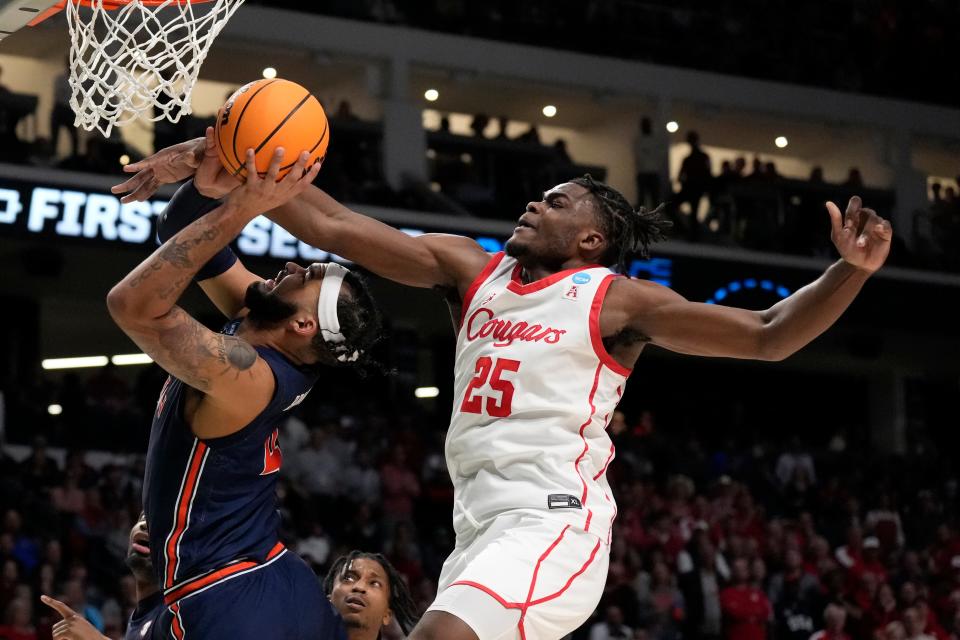
Jarace Walker, forward, Houston
Why he fits: On paper, Walker seems to be the Pacers' most obvious fit. They need defense, rebounding and a natural power forward, and Walker fits the bill across the board.
Walker measured 6-6 1/2 at the combine at 248.6 pounds with a 7-2 1/2 wingspan, so he has more than enough size and length to play the 4 and his athletic tests were among the best of anyone who tested. He had the 10th best max vertical leap at 38.0 inches, the third-best standing vertical at 34.5 inches, the 12th-best three-quarter court sprint at 3.2 seconds and one of the best lane agility drills among forwards at 10.89 seconds. The Pacers spent the season starting the 6-5, 215-pound Aaron Nesmith at the 4 and as thrilled as they were with his performance at both ends, he's still undersized for an NBA power forward. Walker is very much not.
The Pacers finished 29th in the NBA in scoring defense and 30th in defensive rebounding percentage in 2022-23 and while Walker wouldn't solve those issues by himself, he could at least get the Pacers' started. He can handle centers and point guards in switches, guard 2-4 as a primary defender and he has exceptional instincts off the ball, sharp in his rotations and in his ability to read passing lanes and protect the rim. His length and muscle are extremely helpful when it comes to cutting off drives, getting his hands in passing lanes, protecting the rim and rebounding. The Pacers had problems in all those areas in 2022-23. He averaged 6.8 rebounds per game and grabbed a combined 21 in Houston's last two NCAA Tournament games.
He averaged 1.3 blocks and 1.0 steals per game in his freshman year at Houston, earning American Athletic Conference Rookie of the Year honors and making All-AAC second team. With Walker helping to anchor the defense, Houston finished second in Division I in scoring defense (57.5 points per game), fifth in adjusted defensive efficiency according to KenPom.com and second in effective field goal percentage defense.
He's also skilled for his size offensively. He made major strides as an outside shooter last season, knocking down 35 of 101 3-point attempts (34.7%) which he said was a better clip than he'd ever hit in his life. He can make plays off the dribble and handle the ball in the open court. He's also a sharp passer which creates opportunities off his drives, in transition and out of the high post and in short rolls. He averaged 1.8 assists last season.
Why he might not: Walker has a good bit of offensive skill, but he's not an overwhelming offensive force and he can be inconsistent. He's not as good at playing through contact as you would expect from a player of his size, which makes him so-so as a finisher. He shot 51.5% from 2-point range as a freshman and made 67 of 100 shots at the rim, but he left a lot of layups on the board. He has a good mid-range game including a reliable floater, but sometimes he relies on that rather than going for the rim.
What that translates to is inconsistency in shooting performance. His longest stretch of consecutive double-figure scoring performances was four games. He scored five points or fewer seven times in 35 games and he made just 7 of 24 field goals and 4 of 16 2-point shots in Houston's final two NCAA Tournament games, including their Sweet 16 loss to Miami (Fla.). He scored 20 points or more six times and averaged a respectable 11.2 points per game, so he'll be enough of a threat that opponents will have to guard him. However, if Pritchard's definition of "high-ceiling" means being capable of being a first or second scoring option, Walker might not qualify.
Who might take him first: Like the Pacers, the Pistons appear set at guard and center with Jalen Duren in the middle, but they could use some talent at the 3 and the 4 and they too could use some defensive help after finishing 27th in scoring defense. They could look at a high-ceiling wing like Ausar Thompson or Cam Whitmore, but Walker also could fit their needs at No. 5. The Magic at No. 6 have more size and less of a need for Walker, but it's at least a possibility they take him.
Ausar Thompson, guard, Overtime Elite
Why He Fits: Like his twin brother Amen, Thompson is an elite-level athlete with length. He has the same measurements as Amen at 6-5 3/4 with a 7-foot wingspan and nearly as much explosion with a 42-inch vertical. Like Amen, his length makes him a defensive ballhawk, which creates transition opportunities and he's dynamite in the open floor.
While Amen is a primary ball-handler, Ausar is more suited to playing off the ball. He can make plays and create space off the bounce but he's also an excellent cutter and a better outside shooter than his brother. He can still create, though, and is a sharp passer with high assists figures even as a shooting guard. He teamed with Amen to help the City Reapers win the Overtime Elite championship this season, averaging 16.3 points, 7.1 rebounds, 6.1 assists, 2.4 steals and 1.1 blocks per game. He stepped it up even more in the playoffs, averaging 21.0 points per game in postseason play.
His talent as a wing makes him a better fit for the Pacers, obviously, because they already have a primary ball-handler in Tyrese Haliburton and depth at point guard with Andrew Nembhard and T.J. McConnell. The Pacers already have some talent at the wing with Bennedict Mathurin, Aaron Nesmith, Chris Duarte and Buddy Hield -- though Hield is on an expiring contract -- but Thompson should be able to fit in that group without a problem.
Why he might not: Though Ausar is a better shooter than Amen, he's still not a great one. His mechanics are much more sound and he's capable of going on hot streaks. He made 14 of 39 3-pointers in post-season play (38.5%), but he shot just under 30% from 3-point range in the regular season. On the flip side, he's not as dynamic of a finisher as Amen. His athleticism provides a lot of capacity for growth, but he probably won't be as polished of a scorer as Bennedict Mathurin was upon arrival.
And as good as he is defensively, there is still reason to wonder how quickly he'll be able to adjust to NBA caliber talent. Overtime Elite has proven to be a successful product in the early going and if the Thompson twins have NBA success it has a chance to grow dramatically, but there's not nearly the established standard of talent as there is in college basketball or the G League for the players that start their careers with Ignite. It's hard to get a sense for how quickly he'll be able to adjust to the consistency of talent in the NBA, let alone the sophistication of the defensive systems.
Who might take him first: Amen would seem to be a better fit for the Rockets as a partner with Jalen Green, but Ausar might be a fit for them too and he could also be a fit if someone trades into the No. 4 spot. The Pistons are guard-heavy, but they could still use Ausar as a wing and the Magic could find a place for them on their roster too.
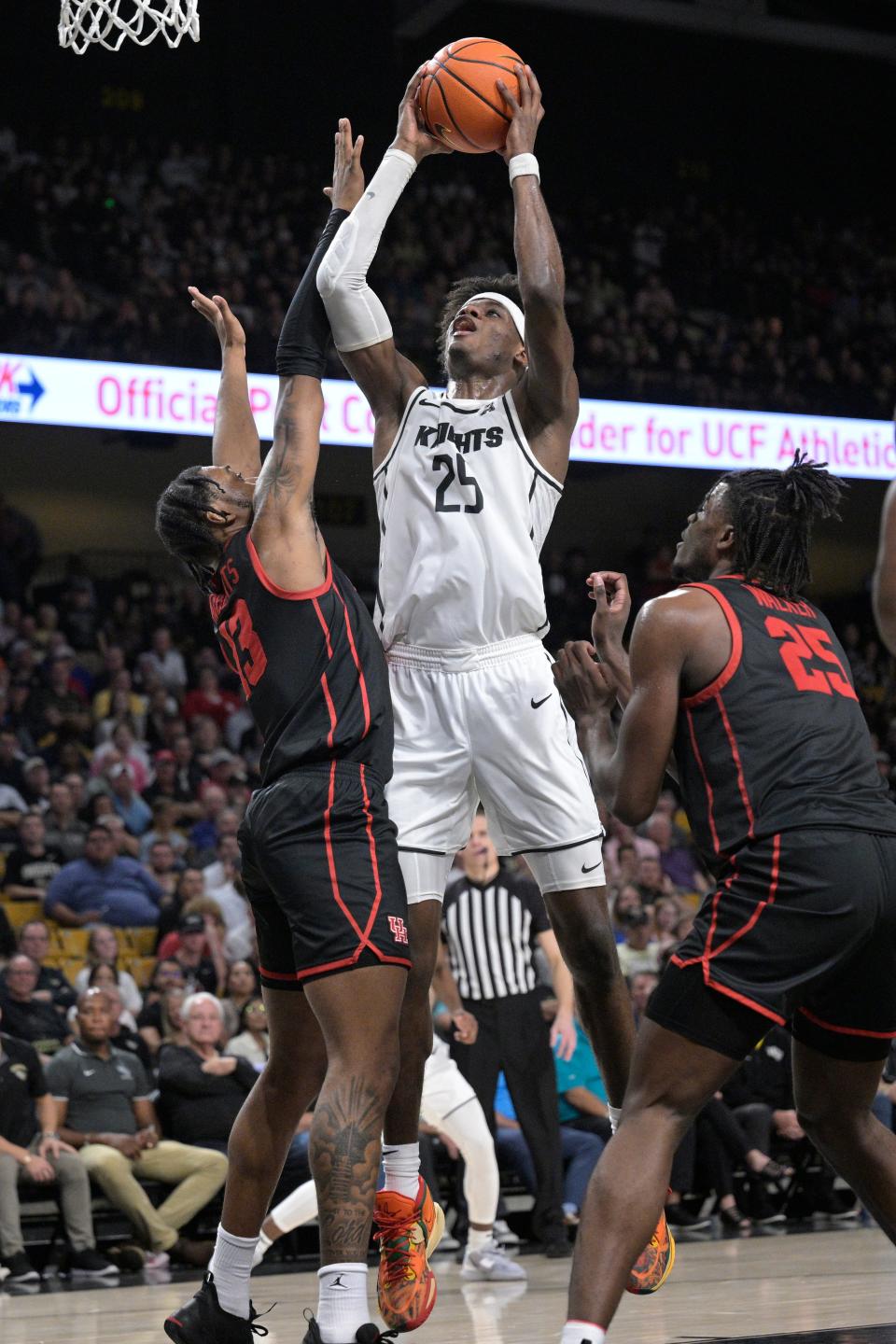
Taylor Hendricks, forward, Central Florida
Why he fits: Along with Walker, Hendricks would be one of the Pacers' two best options if they draft for fit rather than simply going after the best player available.
Like Walker, he has legit power forward size even if he doesn't have the same build. Hendricks has a much leaner body type than Walker at 213.6 pounds, but he's taller at 6-8 1/4. Even though he has a smaller wingspan at 7-0 1/2, he has a higher standing reach at 8-11 to Walker's 8-8 1/2, and that gives him a slight edge as a shot blocker, as he averaged 1.7 blocks per game last season.
That's only so relevant to the Pacers because the one thing they do have on defense is shot-blockers. Centers Myles Turner, Isaiah Jackson and Jalen Smith are all good rim protectors and they had a lot of opportunities because of defensive breakdowns, so the Pacers finished second in the NBA with 5.8 blocks per game. But it's still a useful skill especially paired with his ability to defend away from the rim. He has lateral quickness and closing speed. He can take on guards on the perimeter or in switches. Even when he gets beat, he's excellent in recovery. He's a terrific helpside defender because he moves so fast in rotation, and his closeouts are so good that he alters shots on the perimeter just as he does around the rim. In short, he provides the switchability the Pacers are looking for and the ability to stop the dribble drives that so frequently caused them problems this season.
On offense, Hendricks is a legitimate outside shooting threat. He moves and shoots more like a 3 than a 4. He hit 61 of his 155 3-point attempts, a robust 39.4% percent. Most of those were catch-and-shoot opportunities as 84.7% of his made 3s were assisted according to hoop-math.com but he got open as much through his own off-the-ball motion as he did by camping out and waiting for drive and kicks. He also showed he could hit at least the occasional 3-pointer off the dribble.
Hendricks athleticism and length makes him just as much of a threat around the rim on offense as it does on defense. He threw down 36 dunks in his lone season at Central Florida and was the only player in the country with at least 60 3-pointers, 50 blocks and 30 dunks. He's trouble on lobs in the pick-and-roll and on offensive rebound putbacks, and he has some in-between game as well. He made 35 of 94 3-point jumpers and averaged 15.1 points per game.
Why he might not fit: Hendricks isn't quite at the point where he could be relied on as a primary or secondary scoring option, so there might be some question as to whether or not he's "high-ceiling" enough. He's largely a straight-line driver, most effective off the bounce when attacking closeouts but only so good at crossing over defenders. His handle can be loose and he makes the occasional foolish passing decision. He had more turnovers (48) than assists (46). He's also not a great finisher in traffic when he isn't dunking. Take away the dunks and he was a 52.6% shooter at the rim. All of that suggests that even though he's absolutely a scoring threat inside and outside, he might not be a go-to level scorer.
Who might pick him first: The Pistons will be in the market for a lot of the same players as the Pacers and they could decide on Hendricks over Walker at No. 6. There's a chance the Magic could also take him if they consider him more of a sure bet than one of the Thompson twins, but with Paolo Banchero at the 4 he'd be a bit redundant.
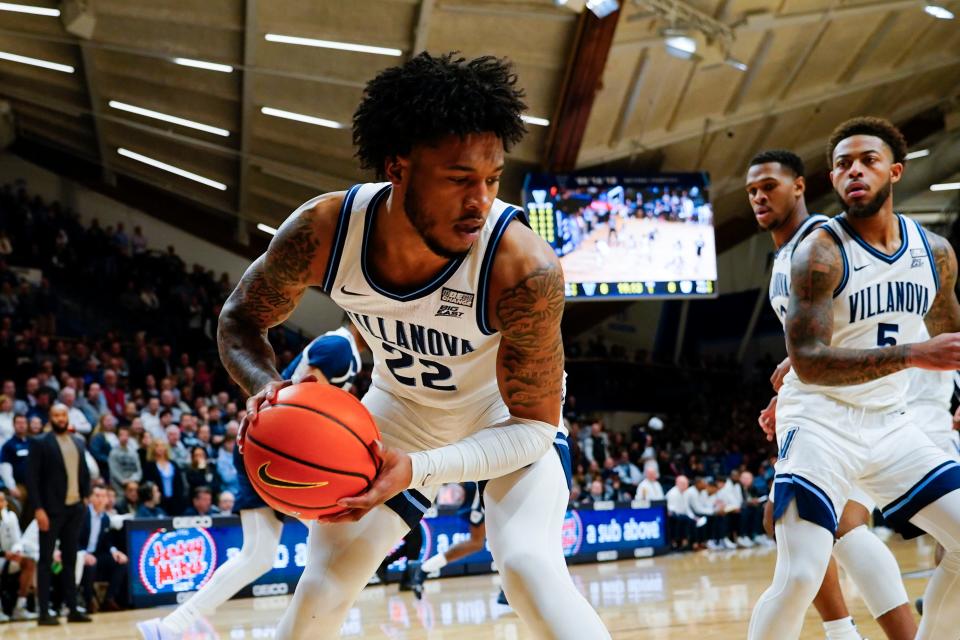
Cam Whitmore, forward, Villanova
Why he fits: Whitmore has huge upside especially on the offensive end. He's still just 18 and won't turn 19 until after the draft, but he has grown-man muscle at 6-5 3/4 and 235 pounds and he's an explosive athlete, posting a 40.5-inch max vertical as well as some of the best speed and agility drills at the combine. He dealt with a thumb injury for much of his first season at Villanova, so his production wasn't quite what you'd hope from a top-10 recruit, but he showed all sorts of signs that he can be an exceptional scorer.
The combination of power and athleticism allows him to finish through contact at the rim. He was 76 of 115 at the rim (66.1%) and most of those buckets came off the dribble drive, but he's also an excellent cutter and got easy baskets by losing his man through movement. He made 37 of 108 3-pointers, a 34.3% clip that doesn't stand out as particularly impressive. However, he proved he could create his own shot and shoot off the move and off the dribble. He averaged a modest 12.5 points per game for the season but he had games when he played like a go-to-guy, scoring 26 points against Xavier in January.
On the defensive end, he showed the ability to move his feet stop drives and get his hands into passing lanes to create turnovers and transition opportunities, averaging 1.4 steals per game.
Why he might not: The flip side of that argument is that picking Whitmore is a swing for the fences and it's entirely possible to whiff. As explosive as he could be as a scorer at Villanova, his offensive game was not very consistent. He was held to single-digit scoring nine times in 26 games, and he scored more than 20 points just three times, which is quite modest considering his capacity.
Whitmore defined streaky as an outside shooter. After hitting 3 of 6 3s in a 19-point effort against Boston College in December, he went 0 of 8 in his next three games and failed to score in double figures in any of them. He hit 4 of 8 3s in a 21-point performance against Providence in late January, then made just 3 of his next 12 and then 6 of his next 26. He was tough to stop when he was getting downhill off the dribble, but his handle was occasionally loose and he struggled as a decision maker, posting just 19 assists against 42 turnovers.
On the defensive end, he had his moments and he's built to withstand drives and his athleticism and size allow him to recover from mistakes, but he was also inconsistent on that end, struggling to get around screens and execute proper closeouts and sometimes losing quicker guards. The potential payoff for Whitmore is extremely high, but he's more of a risk than Walker or Hendricks.
Who might pick him first: John Hollinger of The Athletic actually rated Whitmore as a higher prospect than Miller going into the draft because Miller is 20 months older. It's unlikely but not impossible that Charlotte or Portland or anyone who trades up to the top two spots will agree. But any of the three teams between 3 and 7 -- Houston, Detroit or Orlando -- could easily decide to gamble on Whitmore's upside.
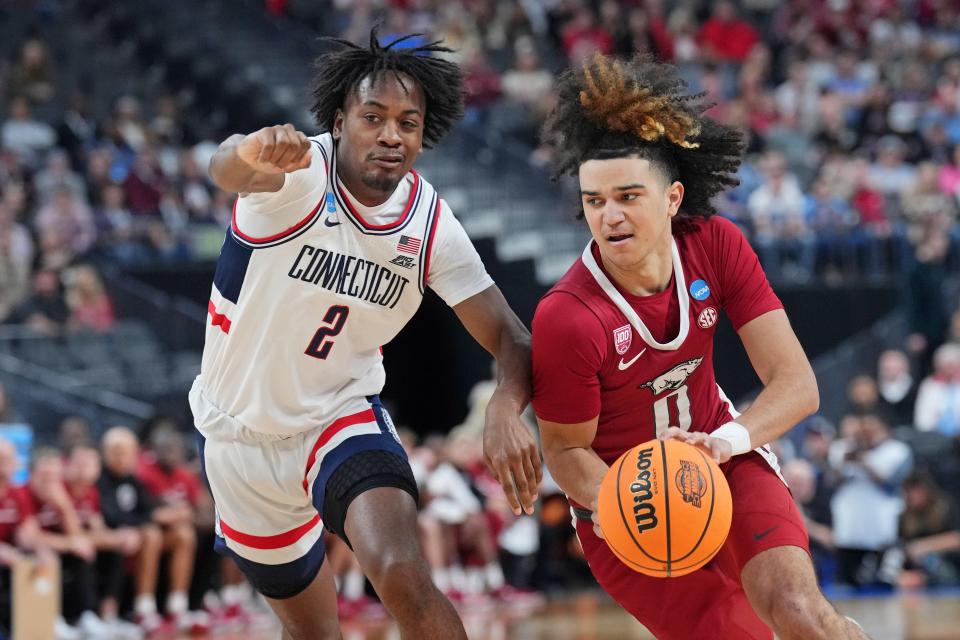
Anthony Black, guard, Arkansas
Why he fits: Black is a force as a two-way player. He measured 6-5 3/4 and 210 pounds at the Combine, so he has legitimate wing size and an excellent perimeter skill set on both sides of the floor. He's a fantastic passer in both transition and half-court settings, he has excellent vision and can manipulate pace and create angles to score and create off the bounce. He doesn't have exceptional speed, but he can get downhill on dribble drives, especially with his right hand, and finish through contact, making 93 of 157 field goals at the rim last season as a freshman at Arkansas. He averaged 12.8 points on 51.3% shooting and 3.9 assists per game.
And on defense, he shows the guard-your-yard mentality that Rick Carlisle has been begging for more of from the Pacers. He shows lateral quickness and tenacity as an on-ball defender and he's excellent at rotation and reading passing lanes off the ball. He finished third in the SEC last season with 2.1 steals per game and also grabbed 5.1 rebounds per game.
Why he might not fit: Like Amen Thompson, Black might be more valuable to other teams than he is for the Pacers because he's at his most valuable when he can be a lead guard. The Pacers obviously saw that depth at the point is valuable and they need to see continued growth from Andrew Nembhard for him to consistently win games when Tyrese Haliburton is out, but the Pacers have too many other needs to use the No. 7 overall pick on a lead guard.
Black can operate off the ball, but one of his biggest weaknesses is his outside shooting. He made just 28 of 93 3-point attempts last season. His in-between game was just OK as he hit 28 of 79 2-point jumpers (35.4%). The Pacers two most important guards going forward -- Haliburton and Mathurin -- both get a lot of their scoring done off the bounce, so even though Black can find a way to get buckets without making outside shots, he might be a little redundant when paired with those two and the Pacers might have an issue with floor spacing.
Who might take him first: It's unlikely but possible the Rockets could give Black consideration at No. 4 and the Magic could also use some guard depth at No. 6. It is more likely, however, that he gets past them and the Pacers but ends up selected by the Wizards at No. 8 or the Jazz at No. 9.
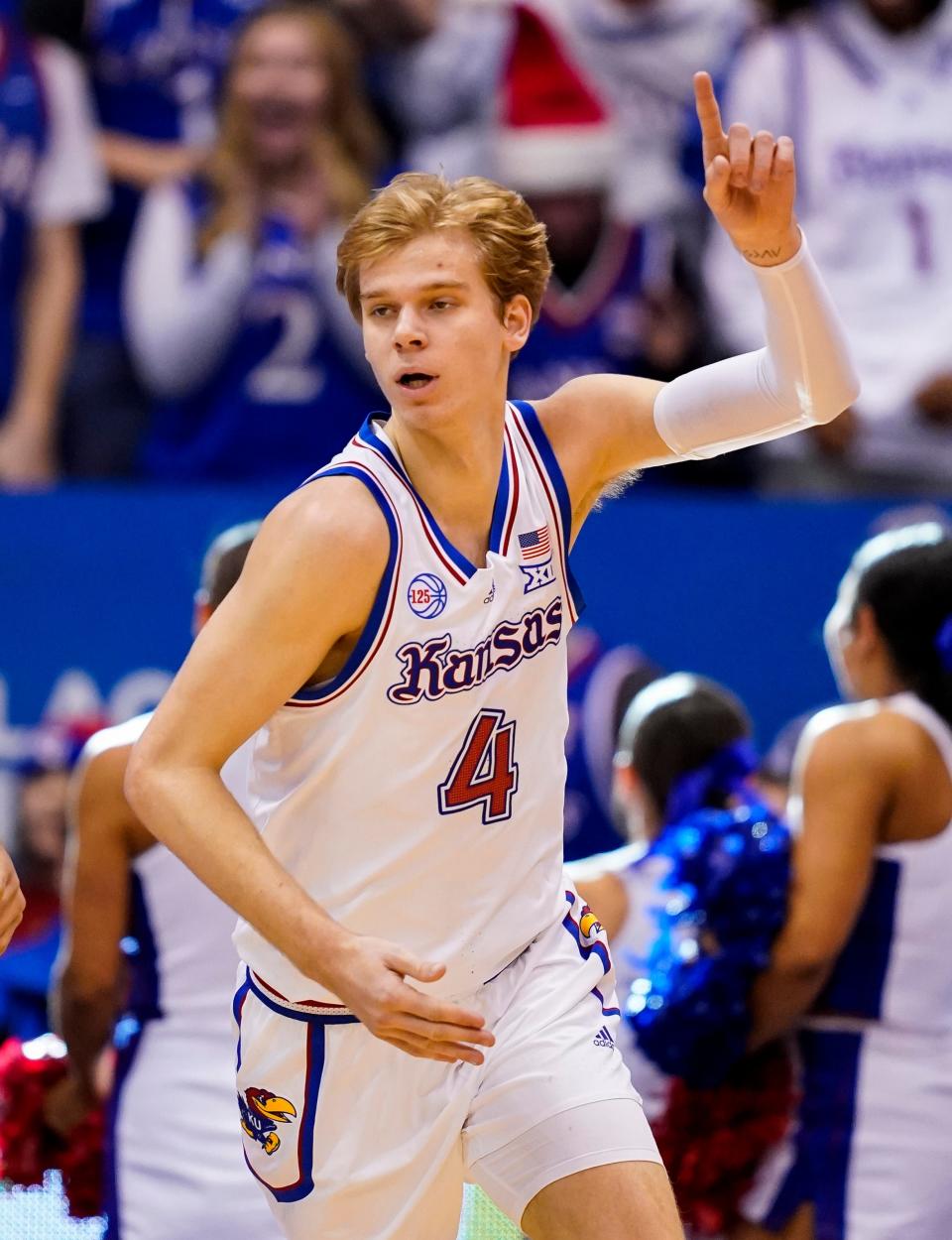
Gradey Dick, guard, Kansas
Why he fits: For the Pacers to be able to play as fast and free as they want to play with Haliburton at the helm, they need wings who can make 3s in bunches to keep the floor spread. Veteran Buddy Hield does that as well as anyone, as he finished second in the NBA in total 3s behind Klay Thompson this season, breaking Reggie Miller's single-season franchise record. However, he's on the final year of a four-year, $94 million deal. He's the most valuable piece the Pacers would likely consider moving if they want to make a major trade offer, unless they'd be willing to deal Myles Turner right after signing him to a two-year extension. They obviously could extend him, but they'd have to decide how much they'd be willing to play a 31-year-old who isn't a great defender and he'll have to decide whether he'd be better off testing the market.
So if and when Hield goes, the Pacers will need a shooter to replace him, and Gradey Dick is one of the best shooters in this class. He hit on 83 of his 206 3-point attempts as a freshman at Kansas, (40.3%) and showed he could make 3s in just about any scenario. He was lights-out as a catch-and-shoot threat and could also make 3s off the bounce or in transition.
Dick also took advantage of the tight defense he was facing with backdoor cuts that turned into easy layups and dunks and dribble pull-ups in the mid-range. He shot 48.4% from two-point range, shooting 63.5% at the rim. He measured 6-6 1/4 at the Combine and posted a 34-inch vertical leap, not elite athleticism, but very good and plenty enough to get him above the rim. He's wiry at 204 pounds but showed that he can finish through contact, making 61 of 96 shots at the rim. He has speed and body control and he goes all out in transition making him an excellent wingman on fastbreaks. He's got a high motor and is a good wing rebounder on both ends. He averaged 5.1 rebounds per game, including 1.1 per game on the offensive glass and was third on the Kansas roster with 15 putbacks.
On defense he was at least adequate and made things happen with hustle and basketball IQ. He averaged 1.4 steals per game, and showed he could handle most other wings.
Why he might not: Again, this is where the high-ceiling discussion comes into play. Dick created some offense for himself, but only so much. Kansas had other players who could create off the bounce so he was usually moving the ball before taking too many dribbles, but there were key moments when the Jayhawks could have used a more assertive performance and he had a hard time getting space. In a loss to Texas in early March, he scored just six points in 28 minutes with all five of his field goal attempts coming from beyond the arc. He scored just seven points on 3 of 9 shooting in their surprising second-round NCAA Tournament loss to Arkansas. Even if he rarely creates his own offense, the 3s, back-cuts and floor-spacing are still valuable, but the Pacers would have to wonder if they're worth the seventh pick.
And on defense, Dick is adequate but he's not moving the needle much for a team that finished at or near the bottom of the NBA. He struggled to handle quicker guards and needed to give them space to keep from getting blown by off the dribble. He doesn't have the size to handle much bigger players either, so he's generally limited on who he's guarding, which makes him a similar defender to Hield. He could ultimately step into Hield's position and be cheaper early, but at the No. 7 pick the Pacers might be looking for something more to dream on.
Who might pick him first: The Rockets finished 29th in the NBA in 3-pointers per game in 2022-23 and last in 3-point shooting, so they could use someone who can make outside shots, but No. 4 still seems like a reach. The Pistons and Magic were also bottom 10 teams in 3-point percentage, so it's not inconceivable that they could take a reach, but they will also probably be looking for something more at 5 and 6, and the Magic have a chance to get him at No. 11. If the Pacers don't select him, however, the Jazz make sense at No. 9.
This article originally appeared on Indianapolis Star: Pacers: Seven players Indiana could take at No. 7


